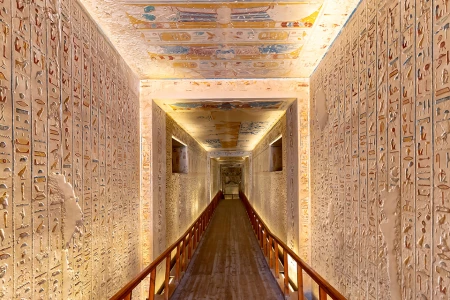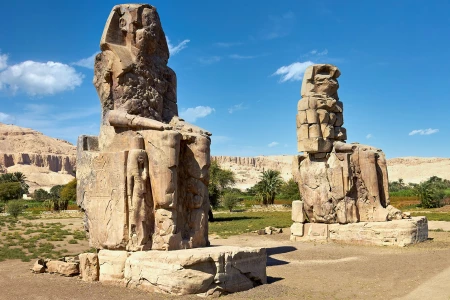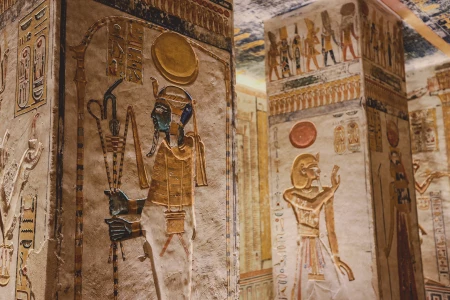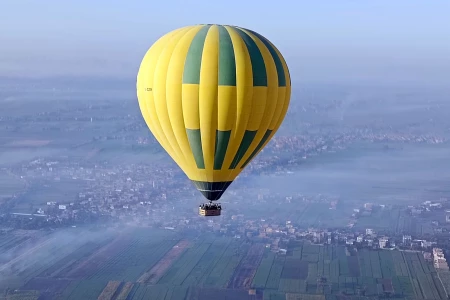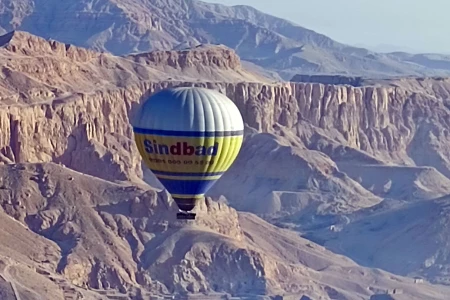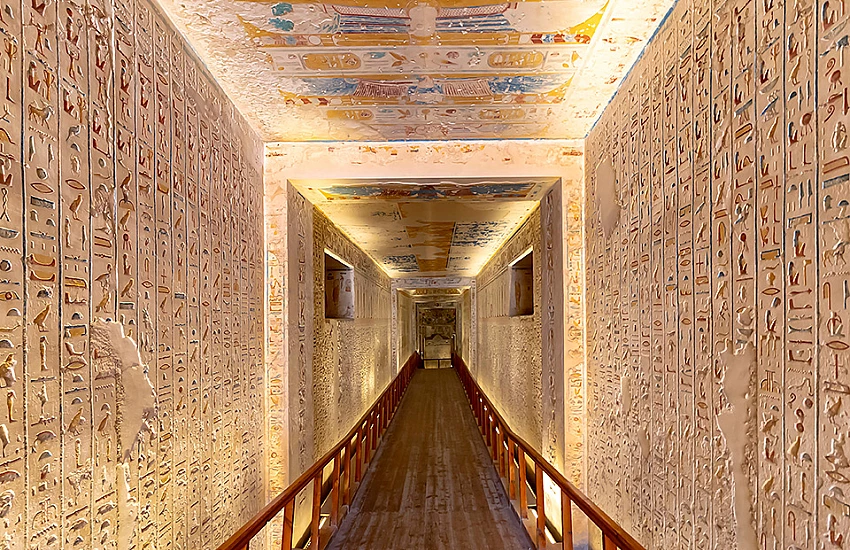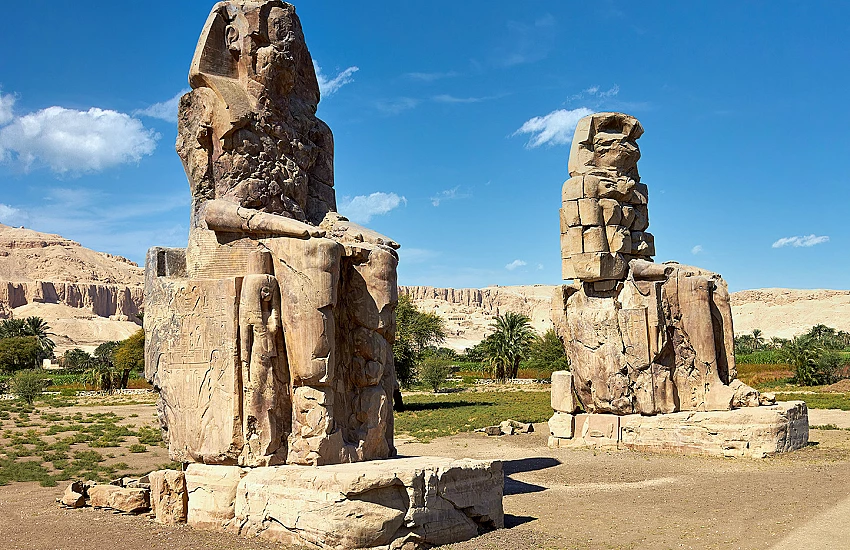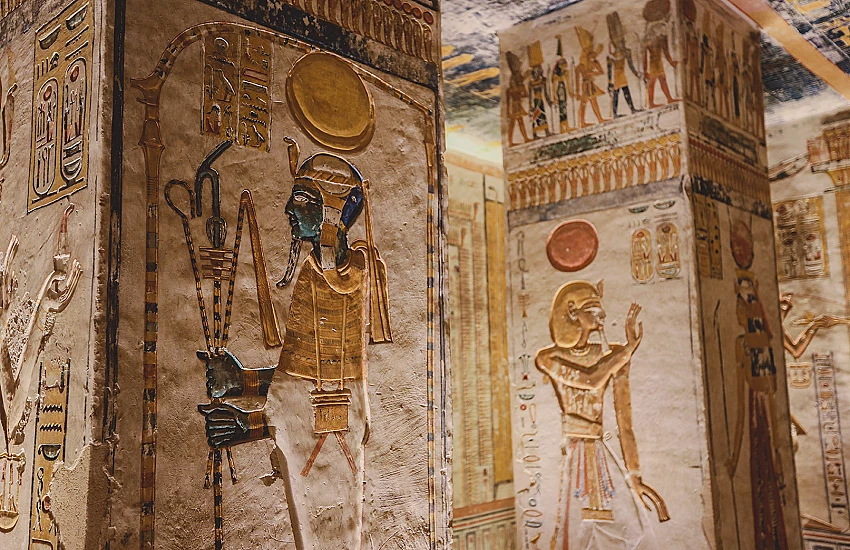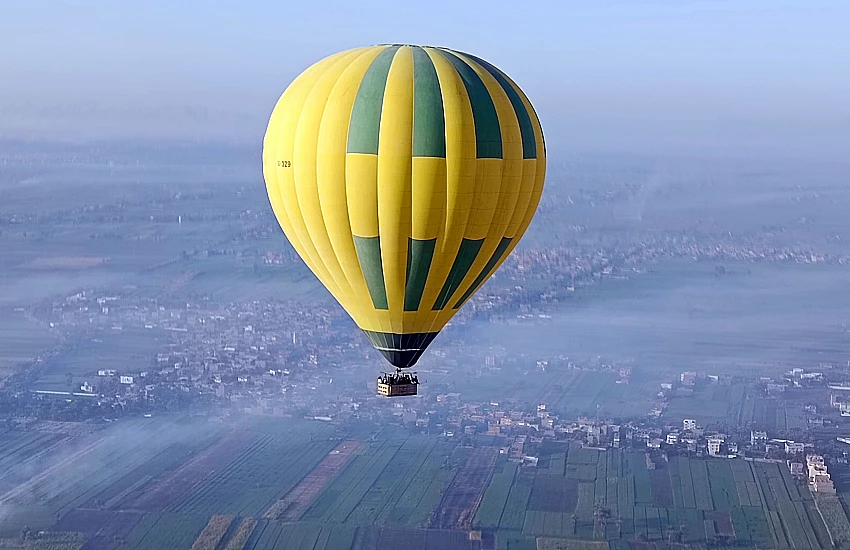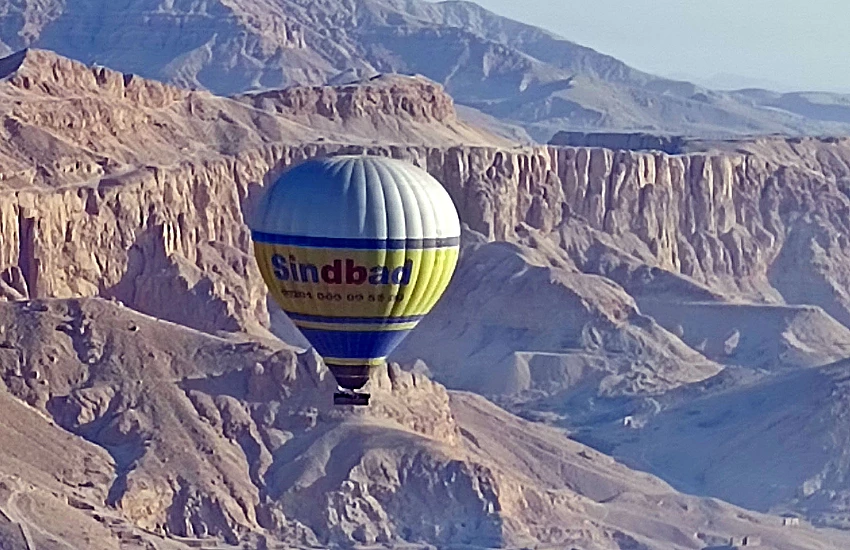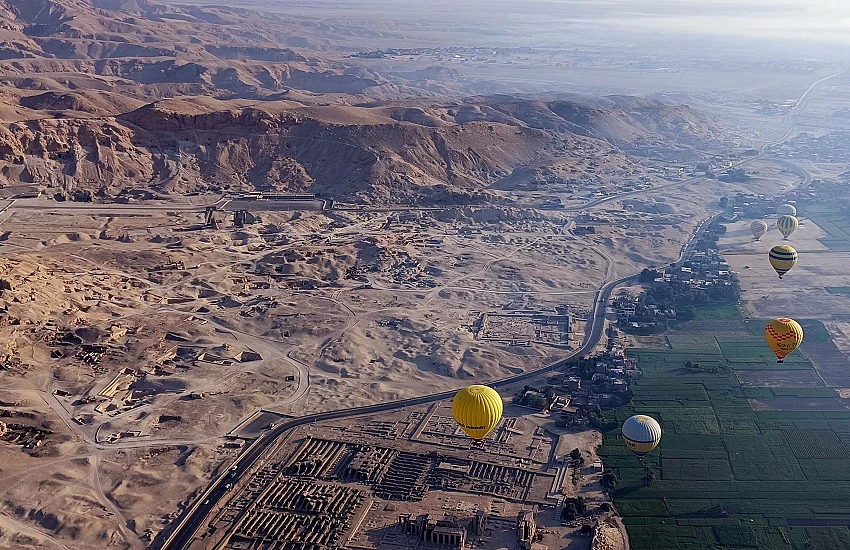
Spis treści
Preparing for your balloon adventure over the Valley of the Kings involves more than simply booking a flight; it is about setting the stage for an experience that combines history, wonder, and awe. As dawn begins to break over the horizon, the anticipation builds. The first step in preparing is understanding that this journey will start early—long before the sun casts its golden hue on Egypt's ancient monuments.
A pre-dawn wake-up call might seem daunting, but it’s essential to catch those first light moments that paint the landscape in ethereal colors.
Dressing appropriately is crucial. While Egypt's days can be scorching, mornings can be surprisingly cool, especially at altitude. Layers are advisable: think light sweaters or jackets that you can easily remove as the day warms up. Comfortable footwear is also essential since you'll likely traverse uneven ground both getting into and out of the balloon basket.
Hydration and nutrition shouldn’t be overlooked. Although most tour operators provide a light breakfast before liftoff, bringing a bottle of water and perhaps a small snack can keep your energy levels steady throughout this early morning adventure.
Mental preparation is equally important. Familiarize yourself with some key historical facts about the Valley of the Kings to deepen your appreciation of what you’ll see from above. This knowledge transforms each visible landmark into a narrative thread in Egypt’s rich tapestry of history. Lastly, ensure your camera or smartphone is fully charged and ready to capture this once-in-a-lifetime experience. However, don’t let technology distract you entirely; allow yourself moments to simply absorb and marvel at the vistas unfolding beneath you.
By thoughtfully preparing for every aspect of your hot air balloon adventure over this storied landscape, you set yourself up for an unforgettable encounter with both natural beauty and human ingenuity etched into one breathtaking panorama.
The Launch: Beginning The Aerial Journey
The anticipation is palpable as dawn gently breaks over the ancient landscape of Luxor. The cool morning air is filled with a sense of excitement and hushed whispers as travelers gather at the launch site, their eyes wide with wonder and awe. The hot air balloons, still tethered to the ground, stand like colorful sentinels against the dim light of early day.
Slowly, they begin to inflate, coming to life with each gust of fire that illuminates their vibrant canopies.
As the balloons reach full height, their vast forms are reflected in the eyes of those about to embark on this extraordinary journey. Each balloon is meticulously prepared by skilled crews who have mastered this art form over years, ensuring every rope and burner is in perfect order. With everything set for departure, passengers are invited into spacious wicker baskets that stand ready for ascent.
The moment arrives; a final burst from the burners fills each balloon with enough hot air to lift it from its earthly bounds. As you gently rise into the sky, any lingering trepidation melts away into pure exhilaration. The sprawling cityscape below begins to shrink while the majestic Nile River unfurls like a silken ribbon through an ancient tapestry. The view transforms dramatically as you gain altitude: sprawling fields give way to desert expanses punctuated by monumental ruins. In no time at all, you find yourself soaring above one of history’s most hallowed grounds—the Valley of the Kings.
From this vantage point high above Luxor's archaeological treasures, you can see more than just stone and sand; you witness millennia unfolding beneath your feet. This aerial journey offers not just a unique perspective but an intimate connection with Egypt's timeless splendor—a fitting prelude to exploring one of humanity’s greatest legacies from an unparalleled viewpoint.
Highlights Of The Valley Of The Kings From Above
From the vantage point of a hot air balloon, the Valley of the Kings unfolds like a grand tapestry woven with millennia of history and mystery. As dawn breaks over the rugged landscape, the first rays of sunlight cast an ethereal glow upon the arid cliffs and hidden tomb entrances, highlighting their ancient significance. The valley, nestled on the west bank of the Nile near Luxor, reveals its secrets slowly as your balloon ascends higher into the crisp morning air.
Below, you can see the intricate layout of this royal necropolis where pharaohs and nobles sought eternal rest. The aerial perspective offers an unparalleled view of how these tombs were meticulously carved into limestone hillsides, their concealed entrances now visible from above. This bird's-eye view brings to life stories that have captivated historians and archaeologists for centuries. The grandeur of King Tutankhamun’s tomb stands out even from this elevated perspective. His resting place may seem modest compared to others around it, yet its discovery revolutionized our understanding of ancient Egyptian burial practices and treasures. Nearby, Ramses VI’s tomb appears like a labyrinthine masterpiece etched into stone—a testament to architectural prowess and reverence for afterlife beliefs.
As your balloon drifts gently across this sacred terrain, you glimpse workers’ villages that once housed artisans who crafted these eternal monuments. The contrast between their humble abodes and the opulent final resting places they built is strikingly evident from above. In addition to human endeavors, nature itself adds to this majestic scene. The Nile River snakes through lush green fields in stark contrast to the barren desert surrounding it—a reminder of life’s delicate balance in this ancient land. Experiencing the Valley of the Kings from such heights not only underscores its historical importance but also imbues one with a sense of awe for both human ingenuity and natural beauty that define Egypt's timeless allure.
Understanding The Historical Significance Of The Sites
Understanding the historical significance of the sites in the Valley of the Kings requires more than a cursory glance at their grandeur; it demands an immersion into their profound past. The Valley of the Kings, nestled on the west bank of the Nile near Luxor, served as the royal necropolis for pharaohs and powerful nobles during Egypt's New Kingdom (1570-1070 BCE).
This sacred ground is a testament to ancient Egyptian beliefs about death and the afterlife.
Each tomb in this hallowed valley is not just a resting place but a narrative etched in stone. The elaborate designs, vibrant murals, and hieroglyphic inscriptions found within these subterranean chambers narrate tales of divine journeys, cosmological concepts, and promises of eternal life. For instance, Tomb KV62—the resting place of Tutankhamun—revealed a treasure trove that has captivated archaeologists and historians since its discovery by Howard Carter in 1922.
The artifacts within Tutankhamun's tomb provide invaluable insights into burial customs, religious rituals, and daily life during his reign.
Moreover, these tombs reflect advancements in art and architecture. The shift from constructing grandiose pyramids to hidden rock-cut tombs signifies not only technological evolution but also changing socio-political dynamics aimed at thwarting grave robbers. Each pharaoh’s desire to secure an enduring legacy led to innovations that have withstood millennia.
Experiencing these sites from above via balloon provides a unique perspective on their spatial arrangement within the rugged landscape—a deliberate choice symbolizing proximity to deities believed to reside beyond mortal realms. This aerial view underscores how geography intertwined with theology in ancient Egyptian culture.
Thus, appreciating these monuments from both ground level and high above enriches our understanding of their historical significance—offering glimpses into an era where life was intricately linked with death and eternity was carved into every stone.
Tips For Capturing Stunning Aerial Photographs
Capturing stunning aerial photographs of the Valley of the Kings from a hot air balloon requires more than just a good camera and an eye for detail. The unique perspective and the ever-changing light conditions present both opportunities and challenges that can make or break your photographic endeavor. Firstly, timing is crucial. The golden hours—shortly after sunrise and just before sunset—offer the most flattering natural light, casting long shadows and highlighting the intricate details of this ancient landscape. These times also provide a softer, warmer glow that can enhance the dramatic effect of your photos. It’s important to be ready as balloon flights often coincide with these optimal lighting conditions.
Stability is another key factor. A hot air balloon provides a relatively stable platform compared to other aerial methods, but there will still be some movement. Using a fast shutter speed can help minimize any blur caused by motion, ensuring crisp images. Additionally, setting your camera to burst mode allows you to take multiple shots in quick succession, increasing your chances of capturing that perfect moment.
Composition should not be overlooked either. The vast expanse of desert contrasted with the lush green strips along the Nile creates compelling compositions when framed thoughtfully. Look for leading lines created by pathways or natural formations to guide the viewer’s eye through your photo.
Lastly, don’t forget to include context in your shots. While close-ups of specific tombs or structures are fascinating, wider shots that capture both the archaeological sites and their surroundings provide a sense of scale and grandeur that truly convey the majesty of Egypt from above. By considering these elements—timing, stability, composition, and context—you’ll be well-equipped to capture breathtaking aerial photographs that do justice to this remarkable historical site.
Concluding The Journey: Reflections And Recommendations
Concluding the journey over the Valley of the Kings from a hot air balloon is an experience that lingers in both heart and mind, leaving an indelible mark on one's soul. As the balloon gently descends, returning to solid ground, a profound sense of reverence for Egypt's ancient grandeur envelops you. The aerial view offers a unique perspective that no museum or guided tour can replicate. It’s as if time itself unfurls beneath you, revealing layers of history and culture meticulously carved into the landscape.
Reflecting on the journey, it becomes clear that this vantage point provides more than just scenic beauty; it offers an intimate connection to a civilization that continues to mystify and inspire. The sprawling necropolis below, with its hidden tombs and intricate hieroglyphics, speaks volumes about human ingenuity and our quest for immortality. Seeing these ancient wonders from above allows one to appreciate their scale and context within the vast desert terrain—a sight often missed when explored solely on foot.
For those contemplating this ethereal experience, it's advisable to book well in advance due to its popularity among tourists seeking both adventure and enlightenment. The early morning flights are particularly magical as they coincide with sunrise, casting golden hues over the arid landscape and accentuating every contour of this historic valley.
Moreover, engaging with knowledgeable guides can significantly enhance your understanding of what lies beneath—stories of pharaohs like Tutankhamun whose legacy endures through millennia. Their insights transform what could be a simple sightseeing trip into an educational odyssey.
In conclusion, experiencing Egypt from such heights elevates not just your physical perspective but also your appreciation for one of humanity’s greatest civilizations. It’s more than a journey; it's a pilgrimage through time—a must-do for anyone yearning to touch history while soaring above it.






